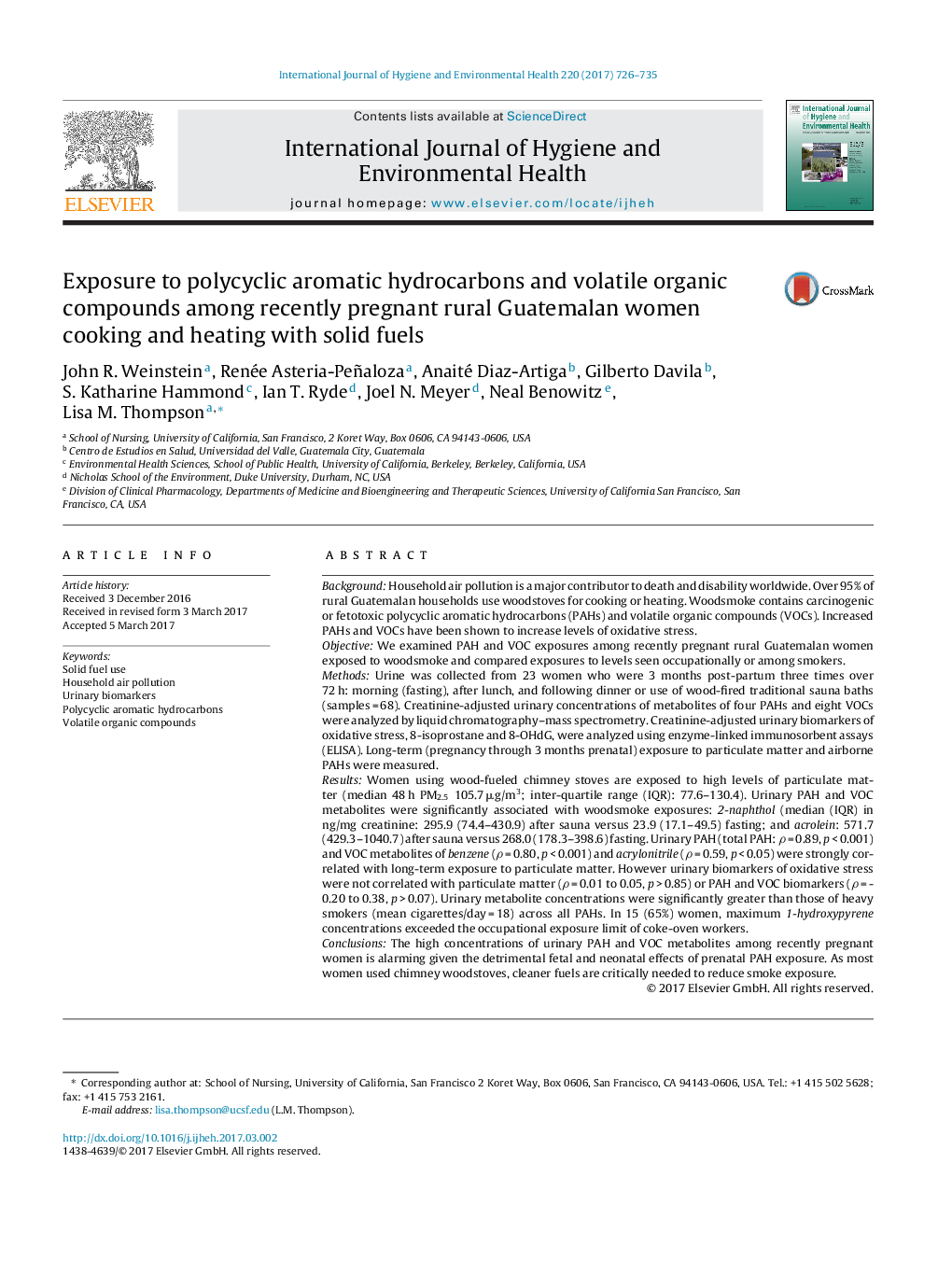| کد مقاله | کد نشریه | سال انتشار | مقاله انگلیسی | نسخه تمام متن |
|---|---|---|---|---|
| 5560566 | 1561873 | 2017 | 10 صفحه PDF | دانلود رایگان |
BackgroundHousehold air pollution is a major contributor to death and disability worldwide. Over 95% of rural Guatemalan households use woodstoves for cooking or heating. Woodsmoke contains carcinogenic or fetotoxic polycyclic aromatic hydrocarbons (PAHs) and volatile organic compounds (VOCs). Increased PAHs and VOCs have been shown to increase levels of oxidative stress.ObjectiveWe examined PAH and VOC exposures among recently pregnant rural Guatemalan women exposed to woodsmoke and compared exposures to levels seen occupationally or among smokers.MethodsUrine was collected from 23 women who were 3 months post-partum three times over 72 h: morning (fasting), after lunch, and following dinner or use of wood-fired traditional sauna baths (samples = 68). Creatinine-adjusted urinary concentrations of metabolites of four PAHs and eight VOCs were analyzed by liquid chromatography-mass spectrometry. Creatinine-adjusted urinary biomarkers of oxidative stress, 8-isoprostane and 8-OHdG, were analyzed using enzyme-linked immunosorbent assays (ELISA). Long-term (pregnancy through 3 months prenatal) exposure to particulate matter and airborne PAHs were measured.ResultsWomen using wood-fueled chimney stoves are exposed to high levels of particulate matter (median 48 h PM2.5 105.7 μg/m3; inter-quartile range (IQR): 77.6-130.4). Urinary PAH and VOC metabolites were significantly associated with woodsmoke exposures: 2-naphthol (median (IQR) in ng/mg creatinine: 295.9 (74.4-430.9) after sauna versus 23.9 (17.1-49.5) fasting; and acrolein: 571.7 (429.3-1040.7) after sauna versus 268.0 (178.3-398.6) fasting. Urinary PAH (total PAH: Ï = 0.89, p < 0.001) and VOC metabolites of benzene (Ï = 0.80, p < 0.001) and acrylonitrile (Ï = 0.59, p < 0.05) were strongly correlated with long-term exposure to particulate matter. However urinary biomarkers of oxidative stress were not correlated with particulate matter (Ï = 0.01 to 0.05, p > 0.85) or PAH and VOC biomarkers (Ï = -0.20 to 0.38, p > 0.07). Urinary metabolite concentrations were significantly greater than those of heavy smokers (mean cigarettes/day = 18) across all PAHs. In 15 (65%) women, maximum 1-hydroxypyrene concentrations exceeded the occupational exposure limit of coke-oven workers.ConclusionsThe high concentrations of urinary PAH and VOC metabolites among recently pregnant women is alarming given the detrimental fetal and neonatal effects of prenatal PAH exposure. As most women used chimney woodstoves, cleaner fuels are critically needed to reduce smoke exposure.
Journal: International Journal of Hygiene and Environmental Health - Volume 220, Issue 4, June 2017, Pages 726-735
